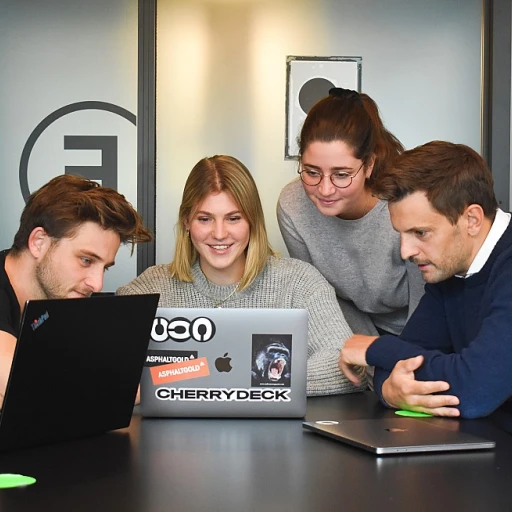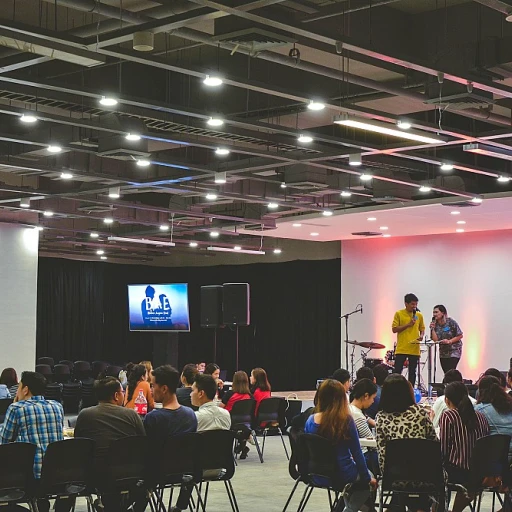Understanding the Shift in Work Culture
Exploring the Evolution of Work Culture
The work environment has undergone a significant transformation, evolving from traditional office settings to more modern, flexible arrangements. This shift in work culture is driven by several factors, including advancements in technology, changing workforce demographics, and the increasing demand for work-life balance.
Employees today seek a work experience that harmonizes their professional and personal lives, leading to a growing interest in flexible work arrangements. This organizational change involves embracing remote work opportunities, which enable employees to work from locations beyond the conventional office space.
A noteworthy aspect of this cultural evolution is the rise of activity-based and flexible working models. Companies are realizing that supporting different ways of working not only enhances productivity but also fosters employee engagement and satisfaction. This transformation reflects a broader change management process where businesses are adapting to meet the diverse needs of their workforce.
Incorporating these changes requires a keen understanding of how work will continue to evolve. Management needs to focus on creating a collaborative and supportive atmosphere that promotes seamless communication and teamwork, both in physical office settings and remote work environments.
As businesses navigate this changing landscape, it becomes crucial to integrate strategies that enhance the overall employee experience. By recognizing these shifts and implementing innovative approaches, companies can position themselves as attractive employers in the competitive job market.
For those interested in learning more about adapting to these changes, exploring
mastering the art of agile office management in the UK work environment can provide valuable insights into embracing and managing these transformations effectively.
Implementing Flexible Work Arrangements
Adapting Work Schedules to Enhance Productivity
The modern work environment has seen a notable shift toward flexible work arrangements. While traditional full-time schedules still exist, many organizations are recognizing the benefits of offering their employees the option to tailor their work time for better balance and productivity.
Flexible work arrangements include numerous formats such as remote work, activity-based working, and various other flexible working methods. These changes allow employees to choose what best fits their lifestyle, ultimately contributing to greater job satisfaction and increased engagement in their work roles.
Integrating flexible work not only improves the employee experience but also supports organizational goals. By understanding that each employee's situation is unique, companies can implement ways to create a more accommodating work environment. For instance, offering part-time positions, compressed work weeks, or the ability to work from home on certain days are simple yet effective methods to enhance work life balance for employees.
This process requires a strategic approach to change management, ensuring that both people and the organization smoothly transition into flexible work settings. Effective communication, clear expectations, and management's support are critical elements to succeed in this transformation. As the world of work continues to evolve,
embracing digital transformation is crucial for companies looking to remain competitive and attract top talent.
Moreover, a flexible workplace also encourages collaborative efforts among teams, even when they are working remote. By creating a culture that values adaptability and communication, the organization can foster a productive and harmonious environment that resonates well with their employees.
Leveraging Technology for Efficiency
Integrating Technology for Enhanced Efficiency in the Workplace
In the modern workplace, leveraging technology is essential for boosting efficiency and productivity. As the shift in work culture continues, organizations are finding innovative ways to implement technology that supports flexible work arrangements and enhances employee experience.
Utilizing digital tools can greatly improve communication and collaboration within the team. With the advent of remote work, tools such as video conferencing software and team chat applications have become indispensable. These technologies help connect employees regardless of their location, enabling seamless communication that is crucial for efficient work processes.
Furthermore, the implementation of smart interactive display panels in the office environment has revolutionized meeting dynamics. These technology-driven tools can facilitate better engagement and interaction, turning traditional meetings into collaborative sessions. For more insights, you can explore the
specifications of smart interactive display panels.
Organizations are also adopting cloud-based platforms for real-time data access and storage. This not only provides employees with the flexibility to work from anywhere but also ensures that collaboration does not suffer due to geographic restrictions. Efficient access to information boosts productivity and enables activity-based working models.
On the management side, technology aids in efficient resource allocation and project management. Workflow automation and AI-driven tools streamline the operational process, freeing up time for employees to focus on strategic and creative tasks. This change management approach enhances the overall organizational performance.
By embracing technological advancements in work environments, companies can not only improve operational efficiency but also foster a culture of continuous improvement and adaptability. As technology evolves, so too must the ways in which it is integrated into the workplace, ensuring that employee engagement and productivity are always prioritized."}
Fostering a Collaborative Work Environment
Creating Synergy through Collaboration
In today’s dynamic work environments, fostering a sense of collaboration is crucial. One of the most effective ways to achieve this is through well-thought-out processes that encourage teamwork. Offices and remote work settings can both benefit from such approaches, helping bridge the gap between employees whether they are in full-time office roles or engaging in remote work.
Encouraging a culture of open communication is fundamental in this regard. Employees should feel comfortable expressing their thoughts and sharing their ideas, whether they are working in an office or remotely. Providing tools that facilitate such interactions can enhance the employee experience significantly. This approach dovetails with implementing flexible work arrangements, allowing team members to engage when they are most productive.
Moreover, organizing regular team-building activities can help build bonds among employees. Whether through remote video sessions or in-office games, these activities create a platform for employees to connect and understand each other better, fostering a cohesive environment.
Additionally, activity-based work environments can aid in providing spaces that accommodate diverse working styles and needs. By adopting flexible working practices, employees can choose the work setting that suits them best at any given time, enhancing both their well-being and productivity.
Creating a collaborative atmosphere requires ongoing effort and adaptability in response to organizational and cultural shifts. Management should continuously explore ways to refine and develop these processes to ensure a thriving work environment that benefits both the company and its employees.
Enhancing Employee Well-being
Promoting Employee Well-being for a Thriving Workplace
In today's evolving work environments, prioritizing the well-being of employees has become an integral part of organizational success. The shift toward more flexible work arrangements and remote work has highlighted the need for workplaces to embrace a culture that supports the mental and physical health of their people.
One of the most effective ways to promote well-being is by implementing flexible working options. By allowing employees to choose their working hours or location, companies can help maintain a better work-life balance. This flexibility reduces stress, enhances job satisfaction, and ultimately leads to a more engaged and productive team.
Activity-based working also plays a crucial role in boosting employee morale. Providing different workspaces designed for specific activities allows employees to select environments that suit their tasks, whether they require focus, collaboration, or relaxation. This approach not only fosters a more adaptable workplace but also enhances overall employee experience by catering to diverse work styles and needs.
Encouraging a culture of open communication is essential for supporting employee well-being. Listening to employees' concerns and feedback creates a sense of belonging and respect. Regular check-ins and feedback sessions empower workers and make them feel valued, helping to build a strong organizational culture.
It's important to remember that the transition to remote working and flexible work can pose challenges. Providing adequate support and resources, such as access to mental health programs or ergonomic home office setups, can alleviate some of these difficulties. Employees who feel cared for are more likely to remain loyal and committed to their organization.
In conclusion, the focus on enhancing employee well-being is not only a compassionate approach but also a strategic move in today's competitive work environment. By embedding well-being into the company culture, organizations can drive positive change, increase employee engagement, and create a fulfilling work experience for their teams.
Adapting to Remote Work Challenges
Challenges and Opportunities in Remote Work
Remote work has transformed the modern workplace, offering both challenges and opportunities for employees and management. With the shift towards remote and flexible working arrangements, it’s crucial to implement effective change management strategies to ensure a seamless transition. Here are some critical areas to focus on:
- Communication and Collaboration: Ensuring that communication channels are open and efficient is paramount. Teams must be equipped with the right tools to facilitate seamless collaboration regardless of their location. This supports not only productivity but also fosters a strong organizational culture.
- Employee Engagement and Experience: Keeping employees engaged remotely can be challenging. Regular check-ins, virtual team activities, and transparent communication can help maintain strong bonds within the team and enhance the overall employee experience.
- Technology and Tools: Leveraging the right technology is essential for working remotely. Integrating tools that support both synchronous and asynchronous communication is vital for sustaining productivity and collaboration in remote settings.
- Flexible Work Arrangements: Offering flexibility in work arrangements empowers employees and respects their work-life balance. This flexibility not only enhances job satisfaction but also increases productivity.
- Ensuring Well-being: Employee well-being should remain a top priority. Encourage regular breaks, promote mental health resources, and allow for flexible scheduling to support a positive work environment.
The move towards remote working brings about a significant cultural change, and adapting to it requires a holistic approach that includes technology, management innovation, and a focus on employee welfare. As you navigate these changes, remember that the goal is to create a balanced and supportive environment for all employees.













